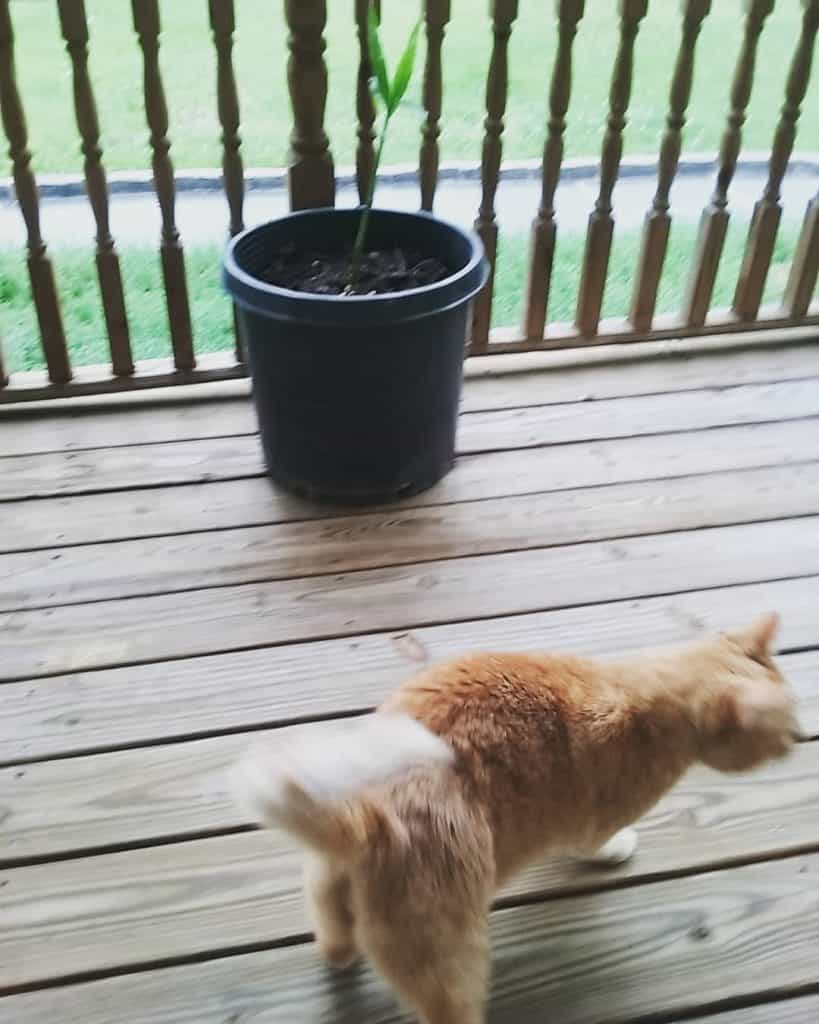I’m growing ginger this year thanks to inspiration from a lecture I attended.
Herbal Faire this year at Evergreen Lavender Farm was great fun. First of all, the event was packed. I think this was the best turnout for the event, ever, and that makes me happy because Bonnie and her family work so hard to make sure the event is great for vendors and the public alike.
Growing Ginger
This year, a guest speaker from Nisani Farms, Ann Codrington, lectured on growing ginger and turmeric. Her farm is in Maryland, but I discovered that both plants can be grown in Virginia and Maryland. The trick is to treat them like the tropical plants that they are and to take the tubers inside in the fall.
Ann’s lecture was fascinating! I screwed up my courage and bought a new ginger plant. Here it is on my porch, a ginger plant with one of our gingers (cats) in front of it:

Ann recommended growing ginger in 100% compost, which was great, because we were emptying our compost bin this weekend, too. Ginger needs lots of moisture and partial shade to shade. I think of it like a tropical understory plant, growing under the big palms and other jungle plants in Hawaii and other exotic places.
The tubers are planted very similarly to iris. Like iris, you can’t plant them too deeply or they will sulk, rot, and refuse to grow. I bought an already started plant from Ann’s booth at the fair, and the tuber itself sort of sloughed off once we planted it. She mentioned this might happen so I was prepared for it.
At first, the plant looked like corn, but now I’m starting to see the large leaves, like the old snake plant we used to have as a houseplant in the 1970s, start to unfurl from the central stem. Growing ginger may be an interesting diversion this summer.
So far, the ginger seems to like my front porch, and after a cursory inspection, the cats are leaving it alone. Fingers crossed, by the fall, I’ll have my own supply of fresh, organic ginger to enjoy in wintertime treats.
remedies can have powerful effects and may interact with medications or existing health conditions. Always consult a qualified healthcare professional before using any herbal treatments. The author and website assume no responsibility for any adverse effects or consequences resulting from the use of information presented here




